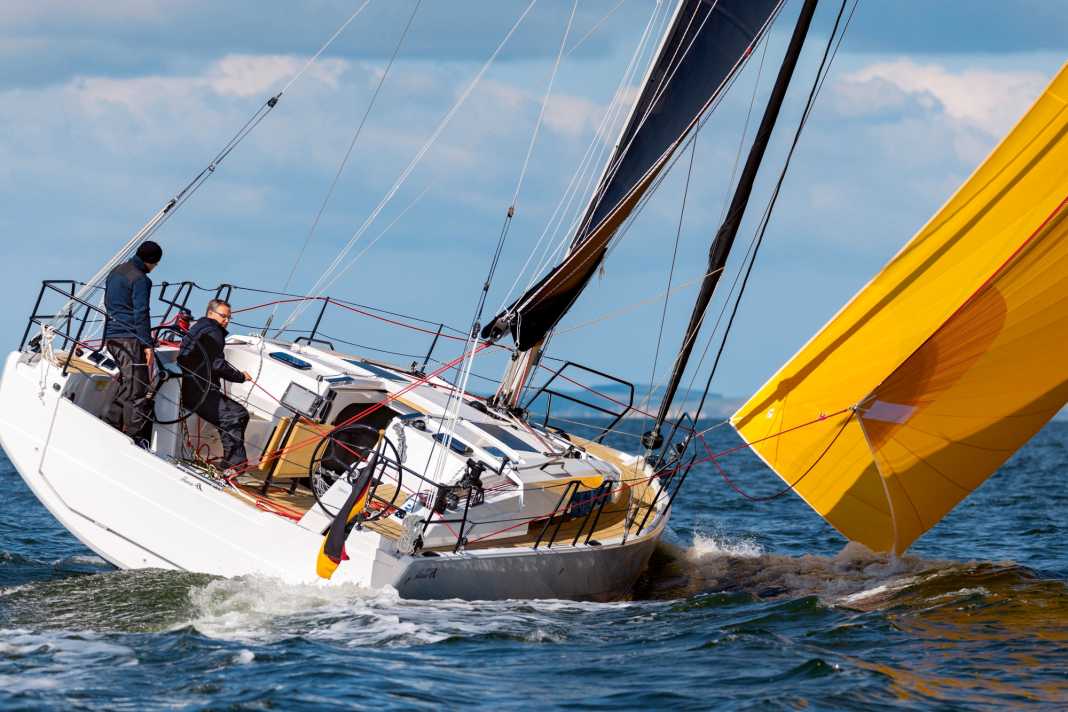





Easy Sailing is the credo at Hanse Yachts. In practice, the term coined by marketing usually means that most trim functions are dispensed with. Instead of a genoa with a hoist point adjustment, a self-tacking jib comes on board, and the traveller is replaced by a simple cockspot. The fewer lines in the cockpit, the more comfortable the sailing - according to the subliminal advertising message.
More from the shipyard:
- Hanse 315: All-rounder is good enough even when used
- Hanse 348 in the test: cruising yacht from the middle class
- Hanse 370: Hanses Hammer with potential to become a GRP classic in a used boat test
- Hanse 418: Faster, more comfortable and more luxurious - cruising yacht bestseller put to the test
- Hanse 460: Single-handed and unmistakable cruising yacht on test
However, they also know in Greifswald that simple truths are rarely correct, as they not only build boats for easy sailing, but also the performance cruisers from Dehler. As a rule, everything needed for trimming is on board these boats as standard. In the past, Hanse also produced optimised versions such as the Hanse 430 Competition, which was successful on the regatta circuit. However, these were elaborate individual constructions that had little more in common with the standard boat than the external shape and were correspondingly expensive.
Product manager Andreas Unger didn't want to go that far with the 360 ST, and the Sport Tourer wasn't supposed to steal a march on the Dehler segment either, even though there is a suitable gap between the Dehler 34 and the 38. Rather, the living comfort of the standard Hanse 360 model was to be combined with more sailing fun - and at a manageable cost.
The basic construction of the hull, deck and interior has been retained unchanged, although the deck has undergone a small diet. Instead of balsa wood, a core made from recycled PET is used on the ST. This saves weight and also serves as a test for the use of the material in future models. The adhesive used to anchor the floor assembly in the hull is also lighter - this is another product that Hanse has not used before.
Features and prices of the Hanse 360 ST
According to the specification, however, the Sport Tourer is heavier than the standard boat. This is due to the better basic equipment of the ST: many of the options on the 360, such as the additional deck fittings, the cockpit table or the electric anchor windlass including anchor gear and the bow nose, are included in the Sport Tourer and therefore also increase the displacement. In addition, the 85 centimetre higher rig and the T-keel add weight.
The ST is framed by two touring sisters when first encountered at the equipment dock. The most striking distinguishing features are the gennaker nose covered with carbon fibre, the black-coated railing supports and the hull windows laminated with perforated film. This gives the boat a more aggressive appearance.
- Base price ex shipyard: 268.821 €
- Price ready to sail: 272.582 €
- Comfort price: 303.823 €
- Guarantee/against osmosis: 5/10 years
As of 2025, as the prices shown are defined, you will find here!
Unfortunately, the two sister ships have not yet been rigged, so there is no comparison of the rigs. The other tuning measures remain hidden for the time being. The Sport Tourer is just as inconspicuous when casting off. The 40 hp engine adds around 60 kilograms to the scales, but also moves the 36-footer very confidently. The retractable bow thruster, which is also installed, could be dispensed with, which together with the lighter standard engine would result in a weight advantage of around 100 kilograms.
In the cockpit, the two additional winches for the genoa sheets guided over the superstructure and the recessed traveller are striking. Both ensure that the sails can be trimmed more easily. Speaking of sails: the test boat is fitted with the optional black Epex sails from Elvström; however, the ST version comes with laminate sails as standard, which are otherwise only available at an extra charge.
The electric winches from Seldén are also available at extra cost, while the Sport Tourer comes with manual racing winches from Lewmar as standard. Thanks to the 45 mm size, these are also significantly more powerful than those on the normal Hanse 360.
No lightweight despite all the tuning measures
Electrically operated, setting the sails on the test boat is very easy. At the push of a button, the fully battened mainsail moves upwards. The same applies to the Code Zero, which we try out first due to the light wind. Its furler comes from Seldén and is also powered by electricity, so that the large sail can be unfurled and furled in just a few seconds. The code can be travelled up to 60 degrees upwind, accelerating the Hanse to around 5.5 knots. Later, with a little more pressure, it can reach up to 6.5 knots. Not bad values for the flat conditions; the maxi display on the mast does not report more than 10 knots of true wind - and despite all the tuning measures, the ST is no lightweight.
Measurement results of the Hanse 360 ST



The advantage of the long traveller is particularly evident in light winds: it can be trimmed far to windward, giving the mainsail the desired twist and maximum propulsion. To assess the cruising characteristics, we switch to the normal genoa. Unfortunately, the wind conditions remain very changeable, which makes it difficult to determine the tacking angle. The far inboard centre points allow small sheet angles. However, without a direct comparison with a standard boat, it is difficult to say how much higher the ST will run and whether it will also get to windward faster.
The Sport version offers more trimming options for more sailing fun - but doesn't overwhelm anyone.
Time for the gennaker: it has around 50 per cent more surface area than the code. At the same time, the onset of thermals sends a few weak gusts of around 12 knots - enough pressure to scratch the 8-knot mark. More would probably be possible, but the small wind fields come to an end before the test boat, which easily displaces 8.5 tonnes, has really got going. What is already noticeable in the short pushes: the Hanse is extremely balanced on the rudder. Even when the foot of the gennaker pulls through the water, there is hardly any need to hold back to stay on track. At the same time, the rudder provides the desired feedback for relaxed steering.
Unfortunately, the wind quickly dies down again - time for a walk below deck. The interior is the same as that of the standard boat, but with a sportier look: The mast support, handles, water tap and companionway are all subtly black, and there is also upholstery with a chic decorative pattern and a colour-coded main bulkhead as well as grey contrasting lockers. There is a choice of two or three compartments in the layout, and the bathroom and nav table versions of the standard model are also available.
Conclusion of the test
Hanse has not reinvented the 360 with the ST version, but the model offers significantly more trimming options, better dimensioned fittings and higher quality sails. This increases ease of use and sailing pleasure. The potential of the keel and rudder should become noticeable as the wind strength increases. Overall, the upgrade has been a success. It does not turn the 360 into a racing yacht, but into a cruising boat that can be sailed much more actively - without overtaxing the crew or helmsman.
YACHT review of the Hanse 360 ST
The ST version of the Hanse 360 offers good trim options, making it an even more comfortable cruising yacht. Adjusted for equipment, the surcharge is fair.
Design and concept
Successful optimisation
Not very innovative
High displacement
Sailing performance and trim
Solid sailing characteristics
Balanced steering behaviour
Good trimming options
Living and finishing quality
Very large living space
Clean high-volume finish
Comfortable berth sizes
Equipment and technology
Well dimensioned fittings
Complete basic equipment
Stretching arms Dyform staging
The Hanse 360 ST in detail
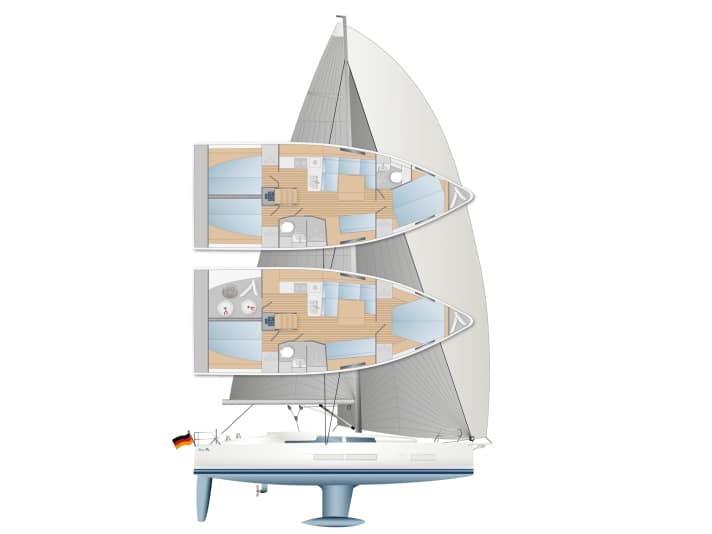
Technical data of the Hanse 360 ST
- Design engineer: B. Racoupeau
- CE design category: A
- Torso length: 10,60 m
- Total length: 11,32 m
- Waterline length: 10,29 m
- Width: 3,99 m
- Depth: 2,15 m
- Mast height above WL: 17,60 m
- Theoretical torso speed: 7.8 kn
- Weight: 8,37 t
- Ballast/proportion: 1,9 t/23 %
- Mainsail: 40,0 m2
- Furling genoa (106 %): 33,0 m2
- machine (Yanmar): 21 kW/29 hp
- Fuel tank: 160 l
- Fresh water tanks: 345 l
- Holding tank: 54 l
Hull and deck construction
Hand lay-up method. Sandwich construction. Hull with balsa wood core, deck with PET foam core. First layer laminated with vinyl ester resin.
Equipment
In addition to more trim functions and larger winches, options such as laminate sails, the electric anchor winch and the cockpit table come as standard.
Rig and sail
85 centimetres more mast height and the genoa provide around 10 per cent more sail area. The stays are made of low-stretch Dyform.
Keel and rudder
The T-keel is deeper and heavier, and it is also hollow in the upper area, which lowers the centre of gravity. The rudder is also more efficient.
Shipyard and distribution
www.hanseyachts.com; Dealer network
Sporty alternatives to the Hanse 360 ST
The market offers a large selection of yachts around 37 feet for upscale sailing fun and living comfort.
Arcona 385
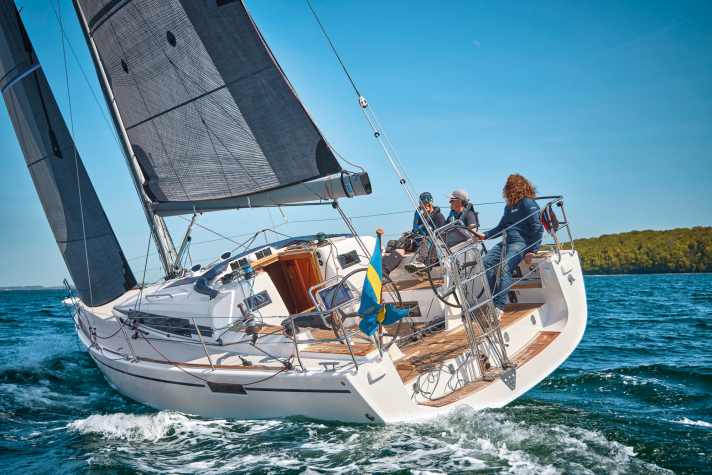
The hull design of the Arcona is based on its predecessor, the Arcona 380, which was launched in 2013, but the deck and styling have been modernised since then. In the 2022 YACHT comparison test, the 385 impressed with excellent sailing characteristics and a high-quality Scandinavian-style interior. It is available with two or three compartments and also has a lot of sail area compared to other performance cruisers - making it much sportier to manoeuvre than the Hanse.
Dehler 38 SQ
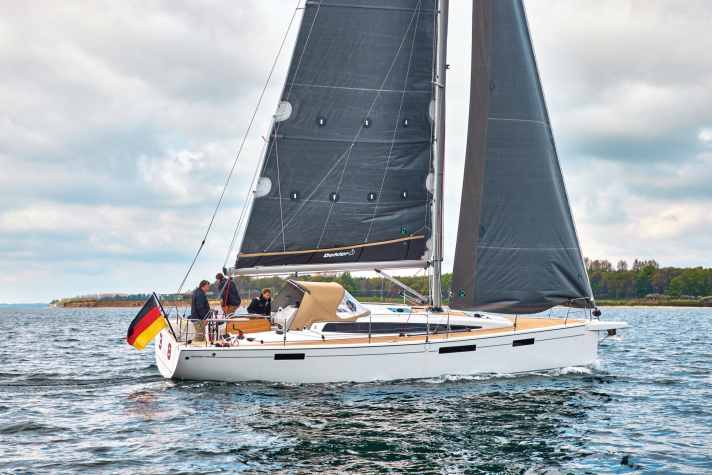
The Dehler 38 is a perennial favourite and is one of the Hanse Group's most successful models. The performance cruiser has been built with slight modifications since 2013 and offers a very successful combination of sailing performance, living comfort and purchase costs. The Hanse 360 is ahead in terms of living space, berth dimensions and costs, while the Dehler is clearly ahead in terms of sailing performance. The current version can also be ordered with a fathead mainsail. The long construction time also makes the Dehler an interesting second-hand boat. Read the test here.
Hallberg-Rassy 370
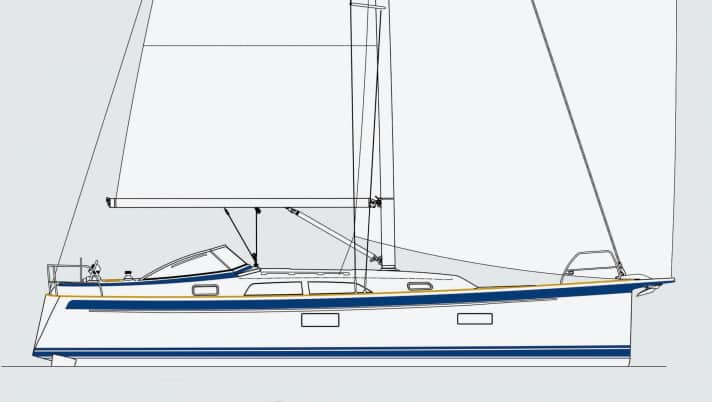
The successor to the well-sailing HR 372 will be launched this autumn. The design corresponds to the current shipyard line with a wide stern, double rudder system and strikingly large windows. The potential can so far only be assessed on the basis of the VPP data, but these look very promising. The boat is only available as a two-chamber layout, but in the saloon you can choose between individual armchairs and a long seating area. Two berth variants are available in the foredeck.
Linjett 36
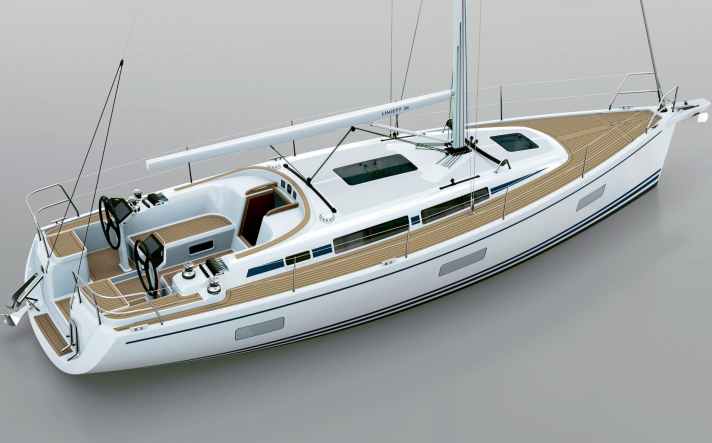
This Swedish yacht is also brand new. She follows in the footsteps of the Linjett 39, which was named Yacht of the Year in 2023, and adopts its design with a sporty sail plan and elegant interior. As with the HR 370, there will only be a two-chamber layout. The cockpit is customised for single-handed operation, as is usual with Linjett. Due to the elaborate vacuum infusion construction with Divinycell foam core, the Linjett is comparatively light despite its extensive equipment and solid wooden interior.
Oceanis 37.1 First Line
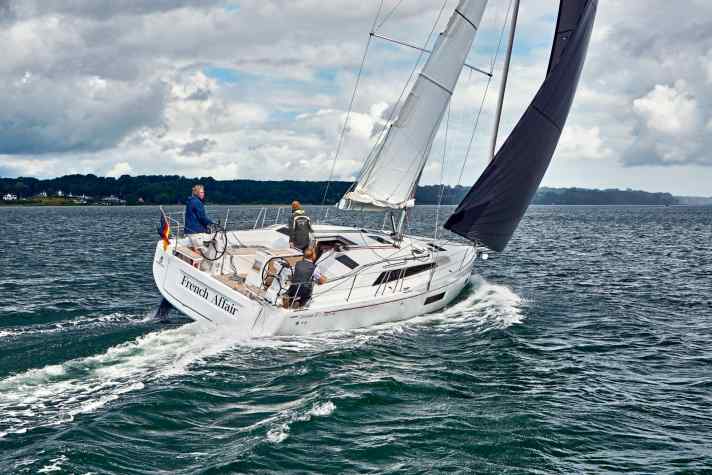
First Line is the name of the sports package for the Oceanis. It includes a fathead mainsail with genoa and bowsprit for code zero and gennaker as well as additional winches, fittings and Dyneema rigging. Unlike the Hanse 360 ST, the mast, keel and rudder remain unchanged, but the Frenchwoman still gains significant sailing horsepower. However, the so-called performance rigging offered by the shipyard was not convincing in the test. Owners should invest in lower-stretch cloths. Read the test of the Oceanis 37.1 here.
RM 1080
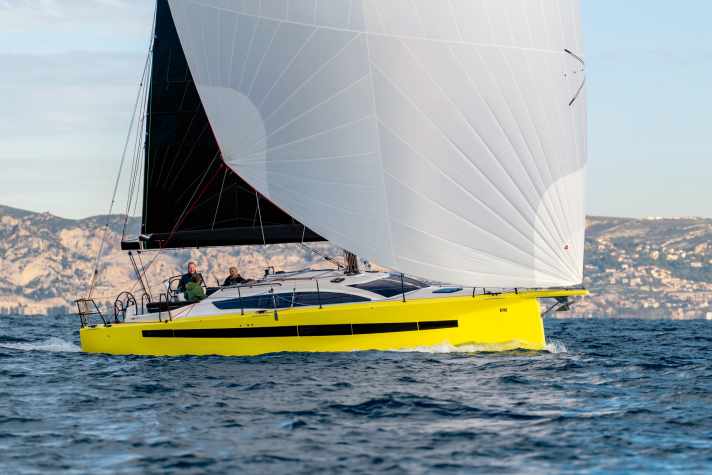
The combination of vacuum infusion deck and plywood buckling frame hull makes the RM an exotic boat. However, the design is stable and very light. The cockpit layout is also unusual: it takes up the entire width of the boat, so there are no side decks aft. The thwarts are extremely wide and can be subdivided for seating by means of insertable backrests. The sailing characteristics are sporty. You can choose between a deep keel and a chine keel. Read the test here.
JKP 39 FC
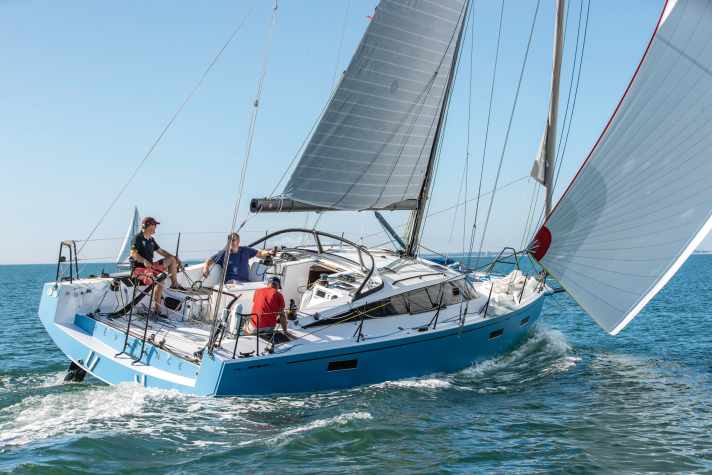
The abbreviation FC stands for Fast Cruiser, which the JPK shipyard, known for its hot offshore racers, takes seriously. The boat is a hybrid between a long-distance racer and a cruising boat and offers a weight-optimised but very comfortable interior with two or three compartments. Depending on the layout, up to eight berths or a technical room are possible. In addition to the standard T-keel, a short fin or an electro-hydraulic swivelling keel are also available. Read the test here.
J/36
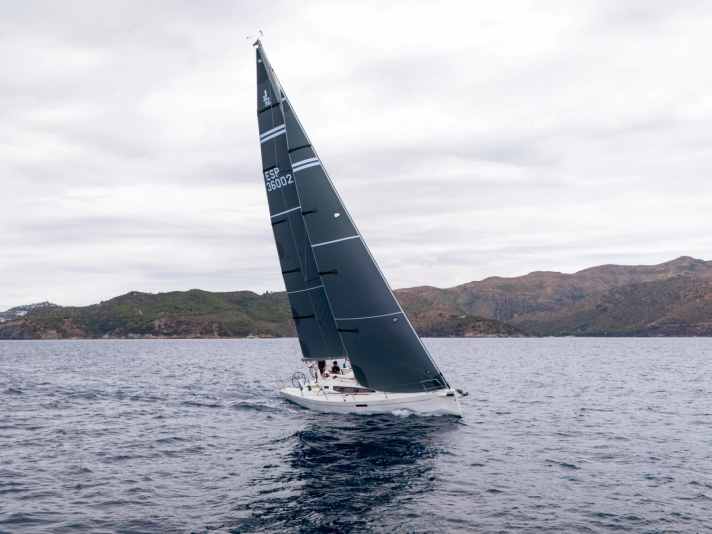
With the new J/36, J/Boats rounds off the bottom end of the brand's Elegance programme. Based on the successful J/112 E, the deck layout has been redesigned. The most noticeable change is that the boat is now built with double wheel steering - like the larger J/40 and the J/45 - while the general arrangement of the winches and fittings for guiding the sheets and lines remains unchanged. The same applies to the long, extendable gennaker pole.
X 4.0
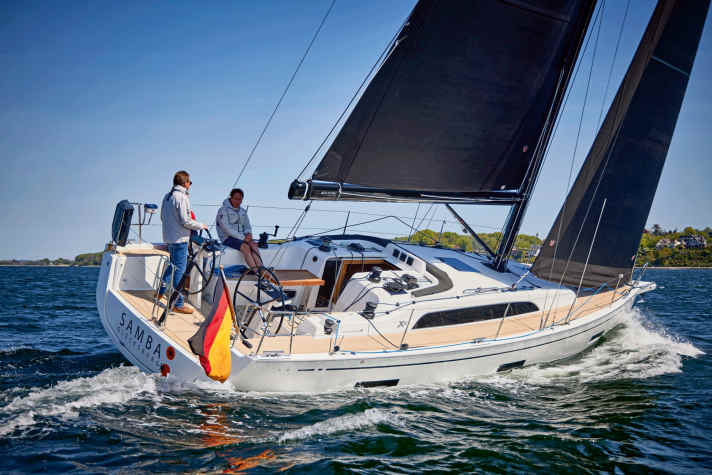
With the 4.0, the Danes have moved away somewhat from their typical sporty design. Instead, the 38-footer offers easy handling, plenty of living comfort and an upscale Scandinavian-style interior. The forward cabin in particular is very spacious. Two or three compartments are available. The combination of steel frame and tempered epoxy infusion hull ensures a very stable structure that can withstand high rigging forces or grounding. Read the test here.
ADVERTISEMENT

Hanse 360 ST insurance from 1,392.22 euros per year* - liability and comprehensive cover. Many options available: Protect your crew with passenger accident insurance. Simply calculate and take out online: yachting24.de
* Offer from Yachting24 valid for a sum insured of 269,000 euros (with current value cover), excess of 1,300 euros, liability cover of 8 million euros.

